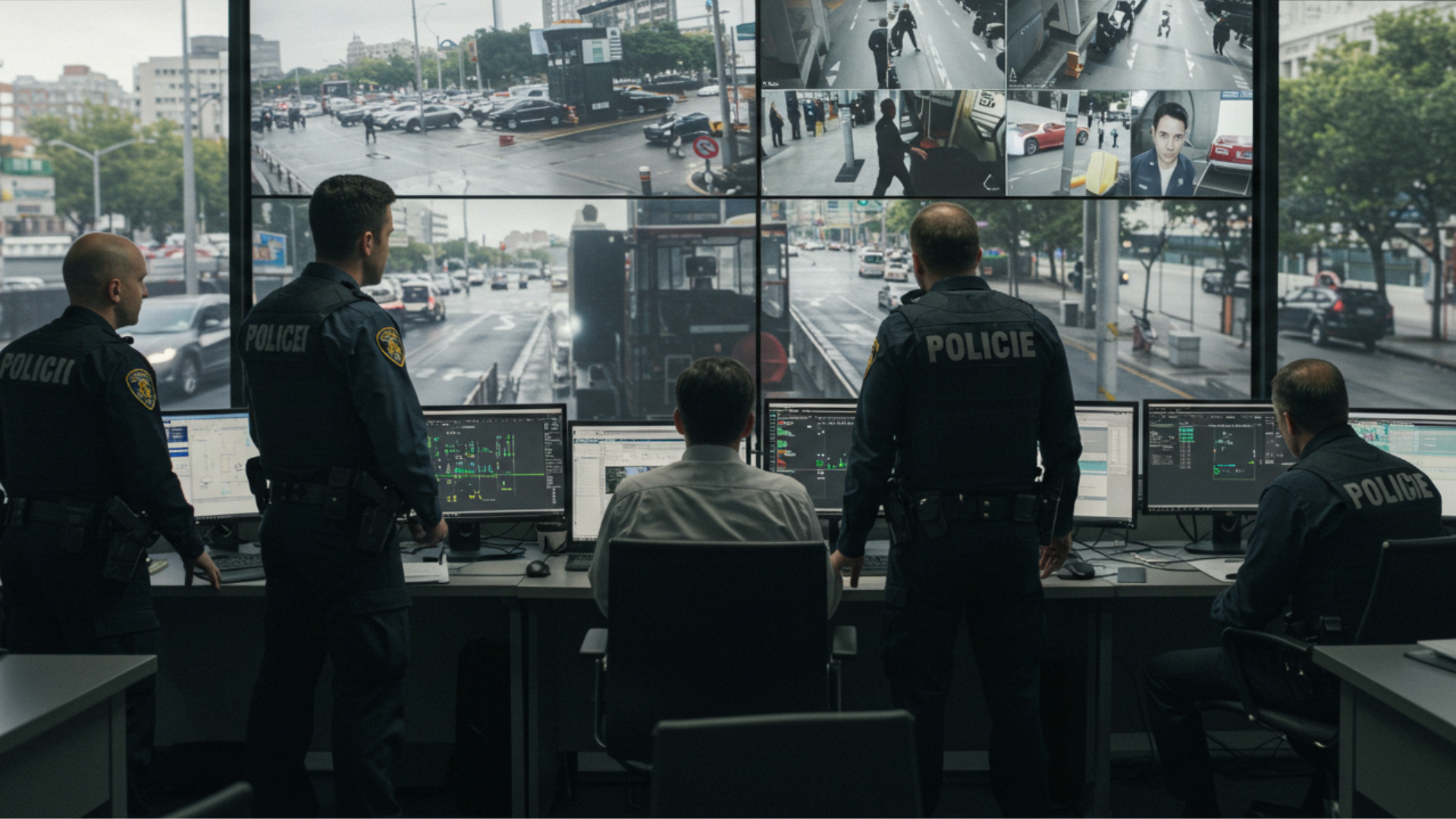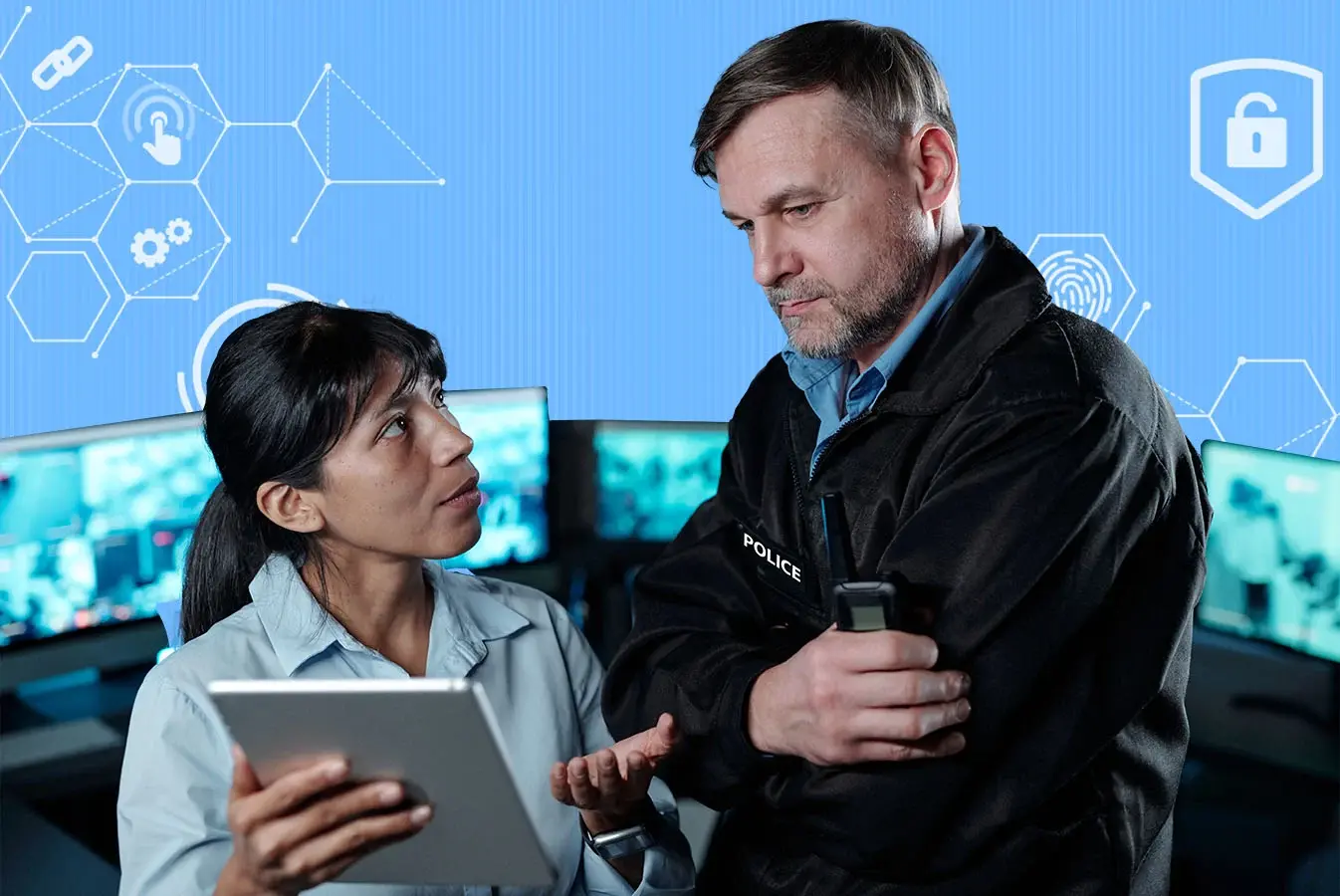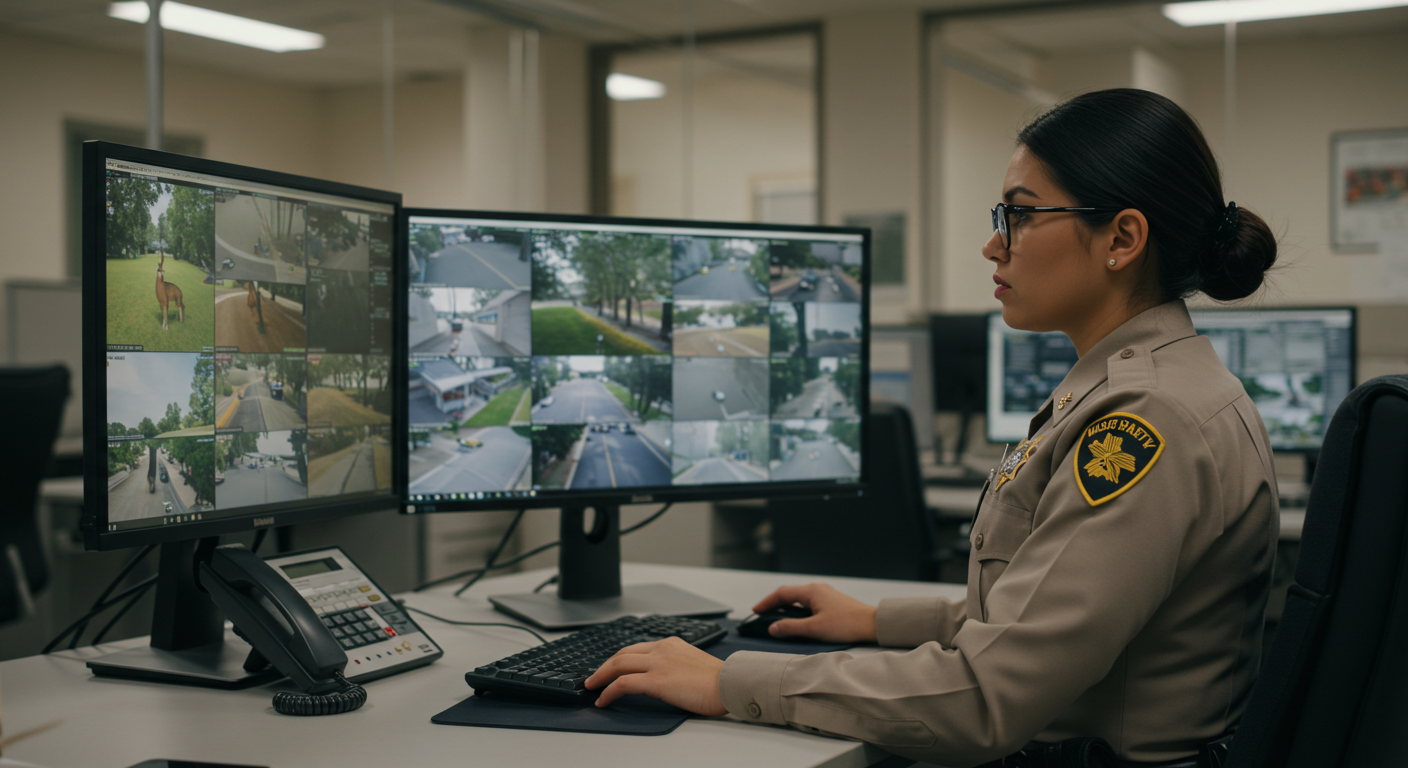5 Ways Anomaly Detection Helps Law Enforcement Agencies Fight Crime
by Shahzaib Shafqat, Last updated: April 28, 2025, Code:

Think of a bustling city block during rush hour. Cars honk as they inch forward, pedestrians hurry along sidewalks, and businesses hum with activity. Amid the usual hustle and bustle, hidden dangers can easily be missed—a forgotten backpack at a bus stop, someone lingering suspiciously outside a store, or unusual crowd behavior.
Law enforcement officers tasked with protecting these dynamic environments face an uphill battle. Differentiating routine activity from potential threats in real-time is an overwhelming challenge. This is where “anomaly detection” steps in as a transformative force.
Anomaly detection utilizes artificial intelligence (AI) and machine learning (ML) to analyze vast datasets—surveillance footage and more—to identify irregular patterns and behaviors. This innovative approach empowers law enforcement to anticipate criminal behavior, respond more effectively to threats, and foster safer communities.
Here’s how anomaly detection addresses critical law enforcement challenges and transforms the fight against crime.
5 Ways to Fight Crime With Anomaly Detection
Anomaly detection relies on machine learning (ML) and AI algorithms to define "normal" within a specific context and flag deviations for further investigation.
These deviations often signal potential criminal behavior, security risks, or other threats, making anomaly detection an indispensable component of modern policing strategies.
By incorporating anomaly detection into their operations, law enforcement agencies can address traditional challenges such as limited resources, data overload, and human error, thereby lightening their workloads.
The results? Proactive crime prevention, faster response times, and improved situational awareness.
The following are five key ways anomaly detection revolutionizes the fight against crime, transforming reactive policing into a more predictive and efficient model.
1. Detecting Criminal Behavior in Real Time
One of the most transformative applications of anomaly detection is identifying unusual behaviors or criminal activities in real-time through video feeds. Law enforcement relies heavily on video surveillance, but manually monitoring feeds is labor-intensive and prone to human oversight.
Anomaly detection algorithms analyze video streams to identify movements or activities that deviate from normal patterns. For instance, in a subway station, a person leaving a suspicious package unattended in a high-traffic area could be flagged immediately for further investigation.
Similarly, anomaly detection can recognize behaviors like loitering in restricted zones or individuals fleeing in a manner indicative of theft or assault. These systems enhance law enforcement's situational awareness, ensuring quicker responses to potential threats.
2. Identifying Threats Faster and Smarter
Anomaly detection is essential for identifying and responding to potential threats that might not be immediately visible in video footage. Law enforcement agencies often face challenges in monitoring vast amounts of video data to detect unusual activities that indicate a crime in progress.
Manually reviewing video feeds is impractical, especially in environments with multiple cameras and high activity levels. Anomaly detection systems, however, excel at analyzing video data to identify irregular patterns or events that require immediate attention.
For example, the system could detect suspicious movements in a public park, such as individuals loitering near restricted areas or unusual activity in a parking lot after hours. Similarly, detecting unexpected gatherings or sudden movements in sensitive zones can prompt quick investigations.
This technology enables law enforcement to respond proactively to visual cues, ensuring critical incidents are identified and addressed promptly.
3. Efficiently Analyzing Video Evidence
Video evidence is often pivotal in solving crimes, but its utility is hampered by the sheer effort required to review and analyze hours of footage. Investigators frequently comb through video records manually.
Imagine being able to search for specific objects or actions in video footage with a simple keyword—type "gun" or "backpack" into the system, and it instantly retrieves all relevant moments.
Advanced anomaly detection systems with object and facial recognition capabilities make this possible. By indexing visual data and tagging objects or activities, these tools allow investigators to search vast archives of video footage as easily as a web search.
Whether you need to locate instances of a weapon being displayed or track a specific vehicle, the system can narrow down hours of footage to just the critical moments. This feature saves significant time and ensures no key details are missed, giving law enforcement the tools to work smarter and faster in solving crimes.
4. Streamlining Investigations with Technology
Video analysis in investigations has traditionally been time-consuming, with officers painstakingly reviewing hours of footage to identify relevant moments. Anomaly detection revolutionizes this process by scanning video footage for unusual events and tagging them for investigators.
Robbery investigations, for example, benefit significantly from this technology. The system can flag video segments where an individual forcibly enters a store, breaks a window, or makes rapid movements indicative of a robbery in progress. This targeted identification allows officers to pinpoint critical evidence within minutes, such as the entry point or the suspect’s movements.
Anomaly detection proves equally invaluable in cases of shoplifting. The system can detect subtle behaviors like concealing items under clothing or inappropriately placing merchandise into a bag. By tagging these actions, investigators can quickly review suspicious activity and identify theft patterns, saving hours of manual footage review and improving recovery rates.
For trespassing, video-based anomaly detection identifies unauthorized access to restricted areas. Whether it’s someone climbing over a fence, bypassing a locked entrance, or lingering in off-limits zones, the system flags these irregularities in real time. This enables law enforcement or security personnel to respond immediately or compile evidence for further investigation.
5. Maximizing Resources with Smarter Insights
Optimizing resource allocation for patrol and emergency response relies on the intelligence provided by video anomaly detection systems. These technologies enable law enforcement to focus on areas and incidents requiring immediate attention.
For example, video feeds from a quiet neighborhood might suddenly show a gathering of people behaving suspiciously late at night. By continuously analyzing live feeds, anomaly detection systems provide law enforcement with actionable insights, allowing them to prioritize their responses based on the severity of detected events.
This precision ensures that officers are deployed where they’re most needed, reducing response times and maximizing the impact of available resources. With video anomaly detection as a guiding force, resource allocation becomes smarter and more efficient, ultimately contributing to safer communities and more effective policing.
Ensuring Safety and Accountability in Correctional Facilities with Advanced Surveillance
Correctional facilities are environments where safety, accountability, and oversight are paramount. However, maintaining these standards is an ongoing challenge due to the risk of abuse, neglect, unauthorized interactions, or the introduction of contraband. Traditional monitoring methods often fail to ensure a safe and well-regulated environment for inmates and staff.
Advanced surveillance analytics address these issues by providing real-time monitoring and anomaly detection. Behavioral analysis tools can detect patterns of aggression or unusual interactions, allowing correctional officers to intervene before conflicts escalate. For instance, sudden clustering of inmates in prohibited areas or repeated unauthorized staff-inmate interactions can trigger alerts, enabling swift corrective measures.
Additionally, automated contraband detection systems play a crucial role in maintaining security. By analyzing footage and identifying suspicious movements or objects, these systems minimize the risk of prohibited items entering or circulating within the facility.
Accurate headcounts, essential for managing juvenile detention centers and other high-security settings, are also streamlined with advanced AI-driven solutions, ensuring accountability without lapses. Integrating such technologies safeguards inmate well-being and enhances operational efficiency, ensuring correctional facilities adhere to the highest standards of safety and oversight.
Conclusion
Adopting anomaly detection is more than just an investment in technology—it’s a commitment to modern, proactive law enforcement. By addressing critical challenges such as data overload, inefficiencies, and security risks, anomaly detection empowers agencies to anticipate and respond to threats more effectively.
This technology transforms operations by automating routine tasks, identifying actionable insights in real-time, and enhancing physical and digital security. From streamlining investigations to preventing crimes before they occur, anomaly detection revolutionizes how law enforcement protects communities.
The impact extends beyond operational improvements. Communities benefit from quicker responses, enhanced safety, and increased trust in their protectors. By fostering transparency and enabling more intelligent resource allocation, anomaly detection strengthens the bond between law enforcement and the public.
As threats evolve, the potential of anomaly detection will continue to grow, equipping agencies with even more powerful tools to address emerging challenges. It’s a cornerstone of modern policing, ensuring safer communities and building trust for the future.
People Also Ask
What is anomaly detection in law enforcement?
Anomaly detection uses AI and ML to identify irregular patterns or behaviors that may indicate criminal activity or threats.
How does anomaly detection improve crime prevention?
By analyzing historical and real-time data, anomaly detection predicts potential threats, enabling law enforcement to act preemptively.
Can anomaly detection reduce false alarms?
Yes, it minimizes false alarms by accurately distinguishing between normal and suspicious behaviors.
What types of data can anomaly detection analyze?
It can analyze video surveillance, social media activity, crime reports, and IT system logs.
How does anomaly detection enhance investigations?
Flagging unusual events in video or data records streamlines evidence collection and accelerates case resolution.
Is anomaly detection effective for public event security?
Absolutely. It monitors crowd behavior and identifies potential threats in real-time, ensuring safety at large gatherings.
What role does anomaly detection play in cybersecurity?
It detects irregular activities in IT systems, protecting sensitive law enforcement data from breaches.
How can law enforcement agencies implement anomaly detection?
Agencies can integrate anomaly detection tools with existing systems, ensuring proper training and maintenance for optimal results.
Does anomaly detection comply with privacy regulations?
Yes, most systems are designed to adhere to privacy laws, ensuring ethical and legal use of data.
What’s the future of anomaly detection in policing?
The technology will likely expand with advancements in AI, offering even more precise and proactive solutions for crime prevention and public safety.
Jump to
You May Also Like
These Related Stories

6 Ways Anomaly Detection Transforms Public Works Agencies

Helping Police Manage Digital Evidence Quickly with Evidence Software


No Comments Yet
Let us know what you think